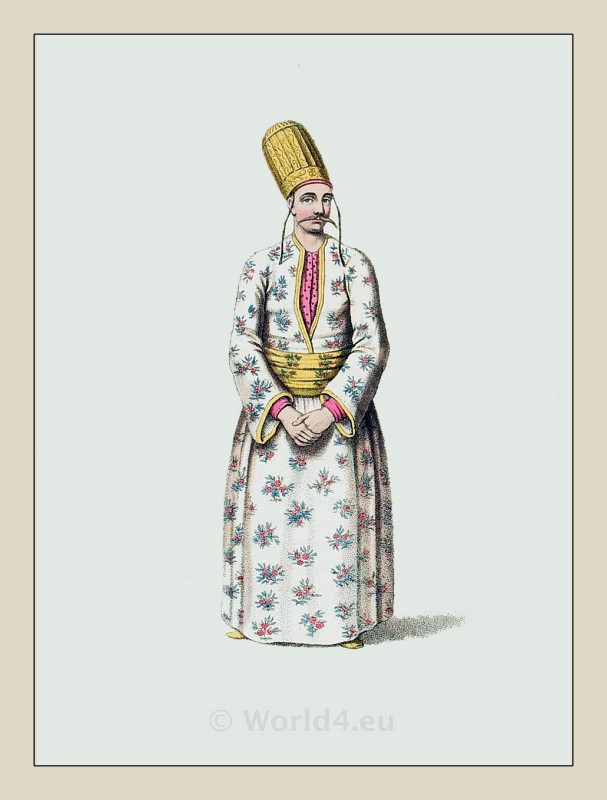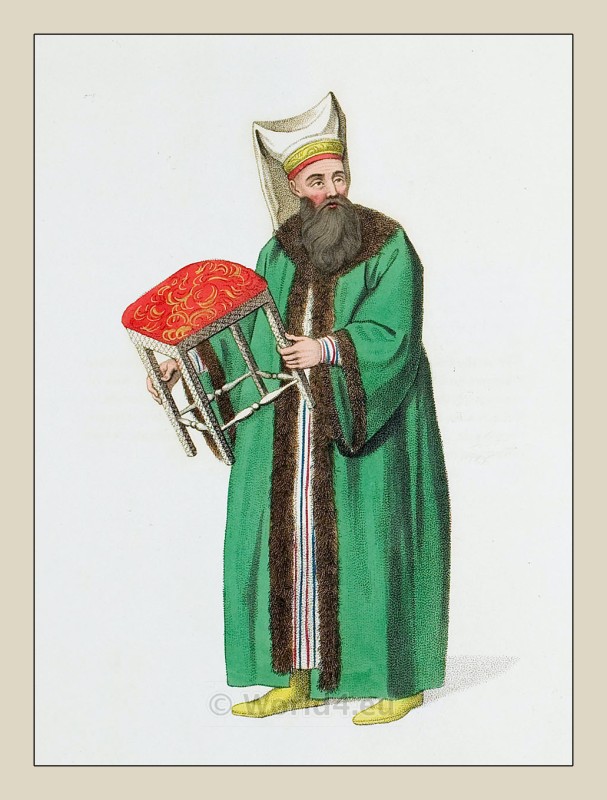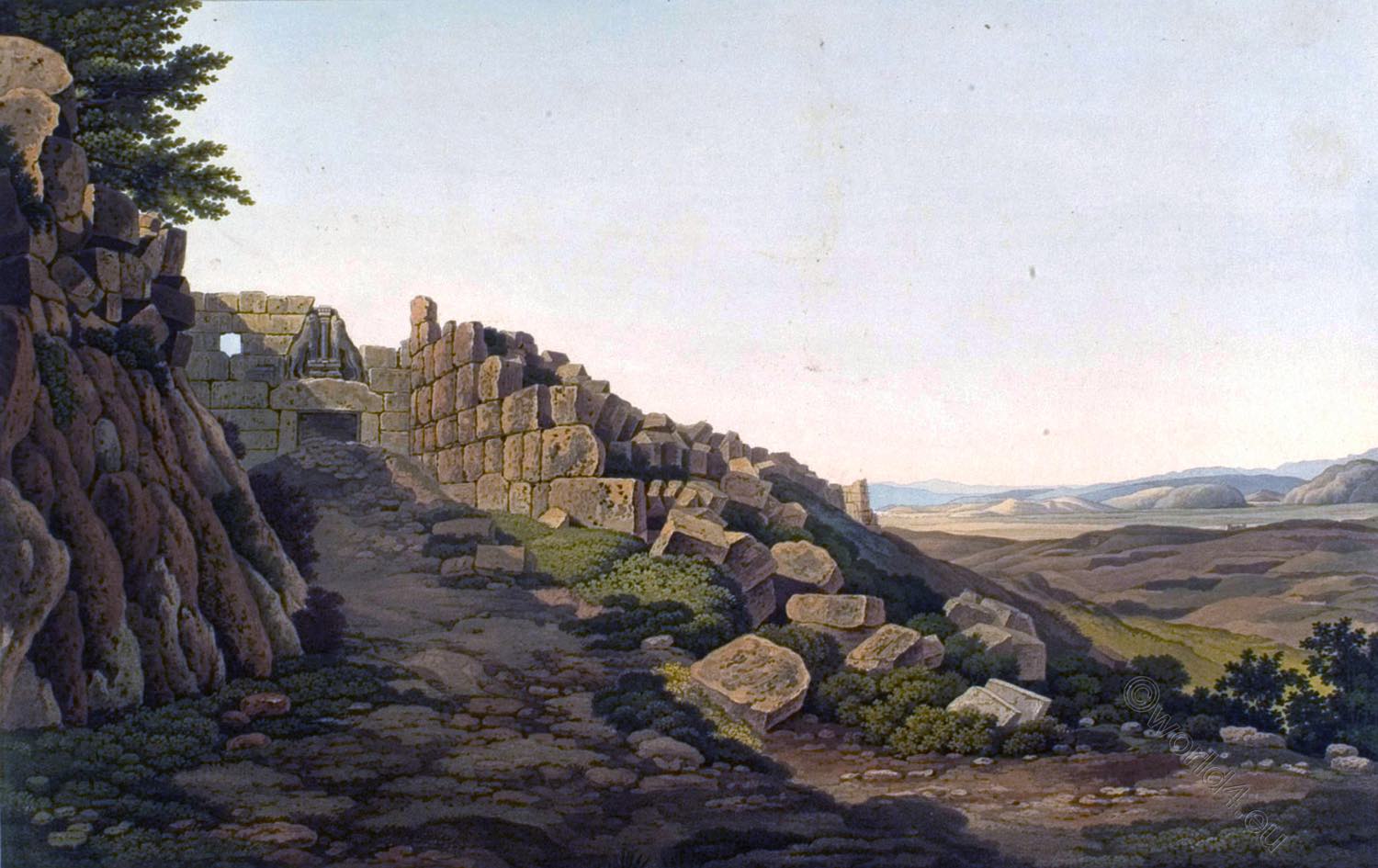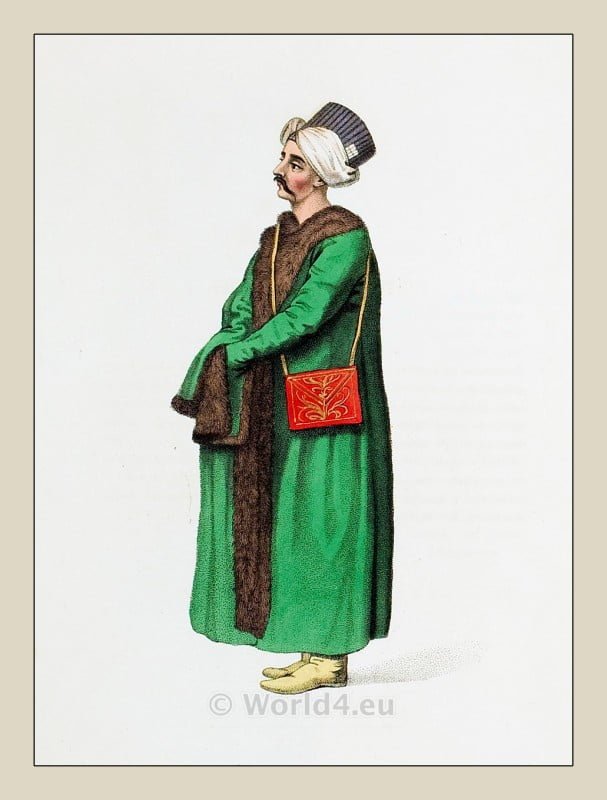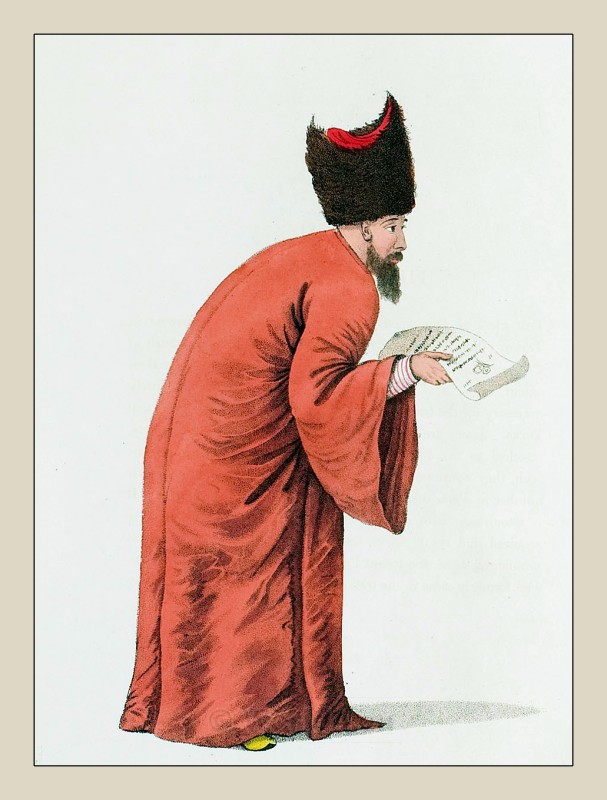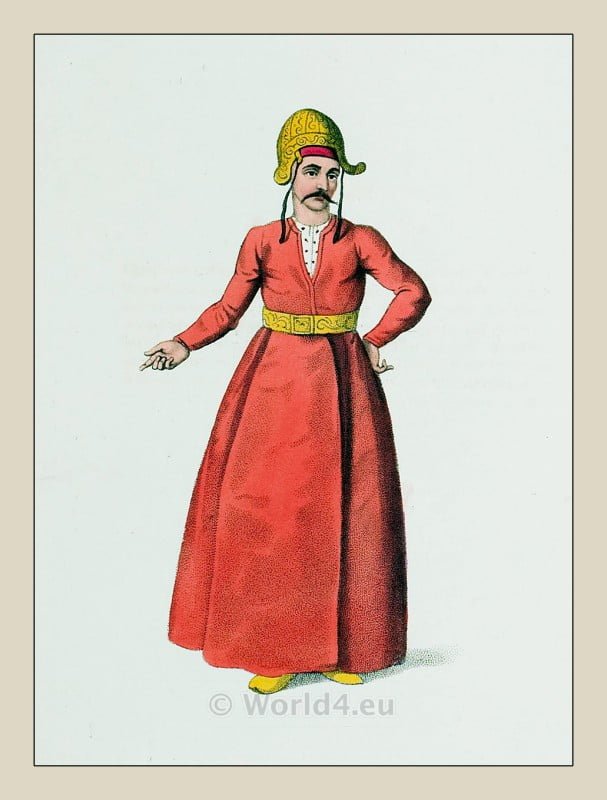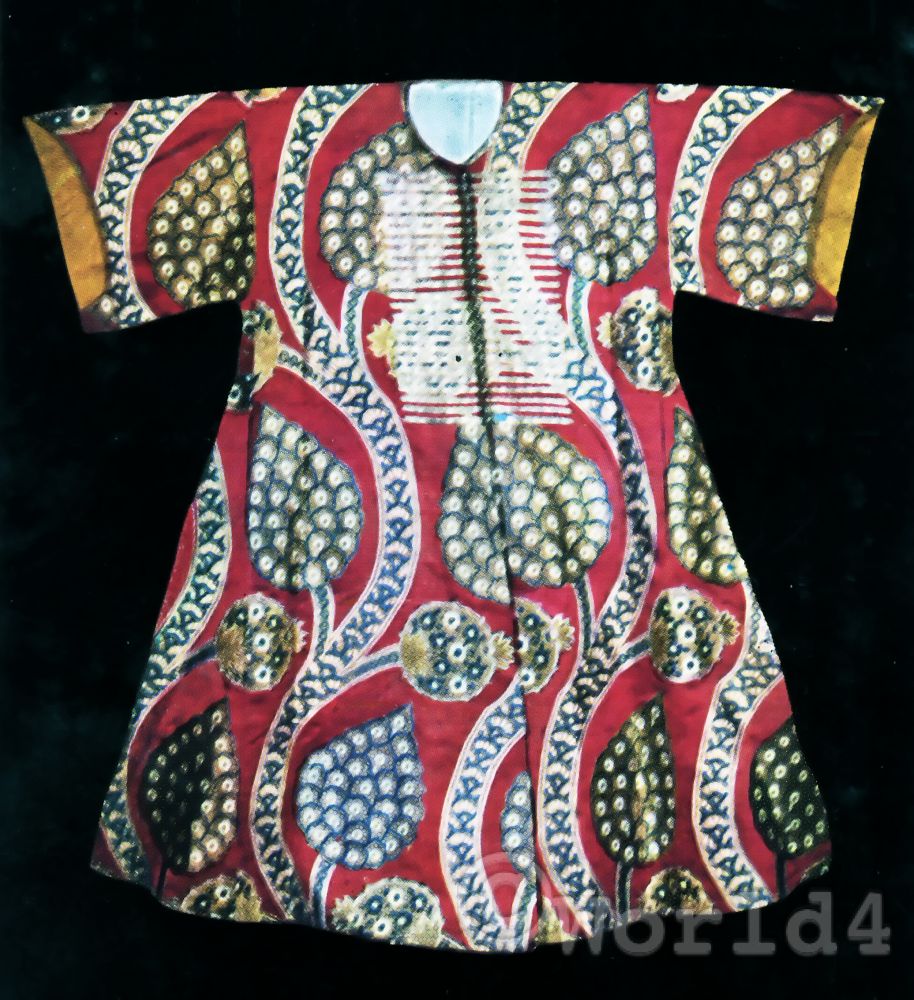A Page of the Turkish Sultan. Head of the Dragomans (interpreters) of the Sublime Gate.
Historical Ottoman Empire officials and ethnic groups.
THE Pages of the Sultan, who hold a much more important office than is to be inferred from what we mean by the same name, at least they often arrive at the most important dignities, are appointed in a very peculiar manner.
There is, in the large suburb of Constantinople called Pera, an extensive building or palace, in which a considerable number of boys are maintained at the expence of the government. These are called Ichlogans. From this body are the Pages chosen. They are here attended by Codjas, or masters, who teach them the Turkish, Persian, and Arabic languages, and the art of writing. Some of them are also instructed in various other accomplishments, and in those offices that are required of them, when they shall be employed about the Sultan’s person.
Many of them, however, are brought up for the inferior situations of the Seraglio; these are called Adjem Oglan. Most of them are the children of Christian captives, and they are very carefully instructed in the precepts of the Koran.
The Ichlogans who have made the best use of their time, and who appear to possess the most abilities, are admitted in the number of Pages; they then rise in succession, and often occupy the most important offices in the seraglio; and by the favour of their Sultan, and the presents they often receive from those whose interest they espouse, sometimes become very rich.
Source: The costume of Turkey. Illustrated by a series of engravings; with descriptions in english. By Octavian Dalvimart. Printed by Howlett and Brimmer. Published in London, 1802.
Related Galleries:
- Costumes and scenery of Afghanistan.
- Historical costumes of Japan and Java.
- History of the Indian Tribes of North America.
- Typical pictures of Indian Natives.
- Traditional Switzerland National Costumes
- Traditional Dutch national costumes.
- Traditional French national costumes.
- Country, Character, and Costumes in Portugal and Spain.
- Folk dresses from Norway, Dutch, Germany and Hungaria.
- Traditional folk costumes of Italy and France in 1821.
- The Serbs in the Adriatic. Their types and costumes 1870-1878.
- Provincial Russia. Russian Costume and Culture.
Discover more from World4 Costume Culture History
Subscribe to get the latest posts sent to your email.

